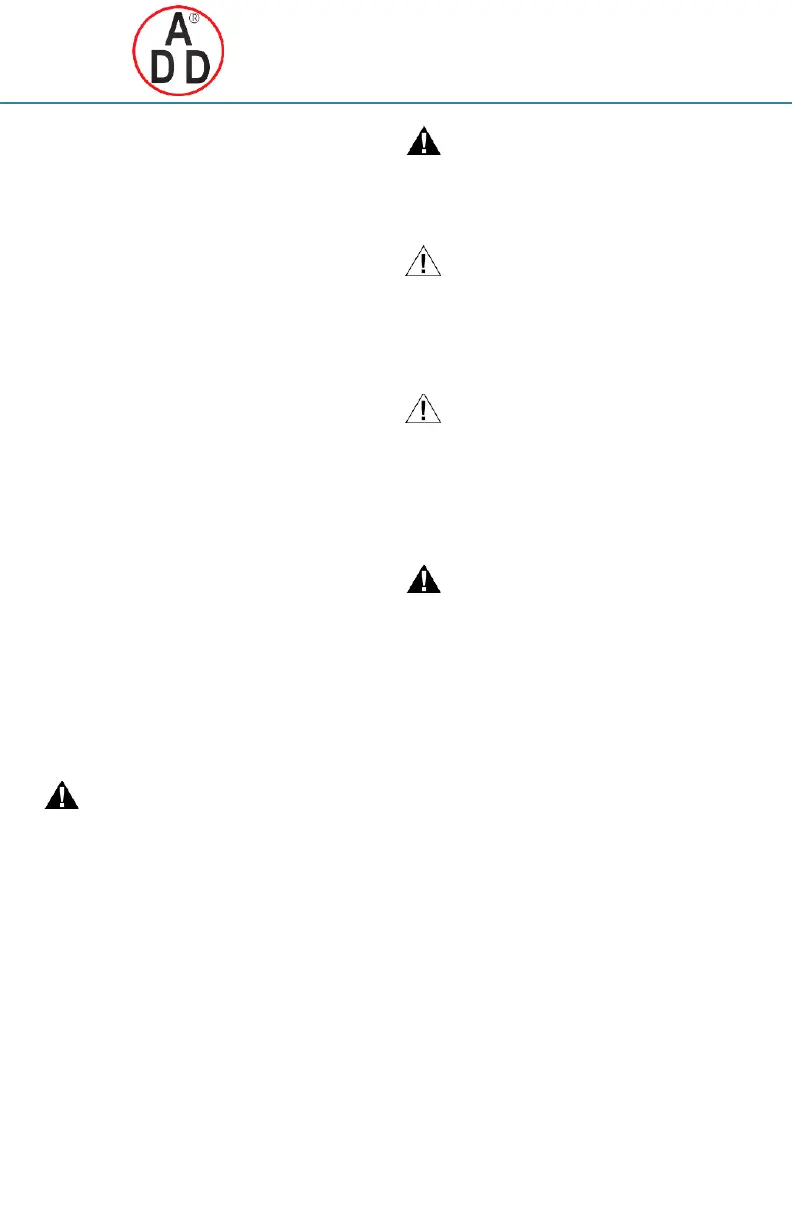S8600B,C,H,M; S8610B,C,H,M; S8670D,E,J,K INTERMITTENT PILOT GAS IGNITION CONTROL
บริษัท เอดีดี เฟอร์เนส จํากัด
ADD FURNACE CO.,LTD.
44 ซอยบรมราชชนนี 70 ถนนบรมราชชนนี แขวงศาลาธรรมสพน์ เขตทวีวัฒนา กรุงเทพฯ 10170
โทร: 02-888-3472 โทร: ออกแบบ:08-08-170-170 แฟกซ์: 02-888-3258
https://www.add-furnace.com E-mail: sales@add-furnace.com
High Humidity or Dripping Water
Dripping water can cause the control to fail. Never install an
appliance where water can drip on the controls.
In addition, high ambient humidity can damage the control.
If the appliance is in a humid atmosphere, make sure air circulation
around the controls is adequate to prevent condensation. Also,
regularly check out the system. A NEMA 4 enclosure is recommended
for the ignition module.
Corrosive Chemicals
Corrosive chemicals can attack the module and gas control,
eventually causing a failure. If chemicals are used for routine
cleaning, make sure they do not reach the controls. Where
chemicals are suspended in air, as in some industrial or agricultural
applications, use a NEMA 4 enclosure for the ignition module.
Dust or Grease Accumulation
Heavy accumulations of dust or grease can cause controls to
malfunction. Where dust or grease can be a problem, provide
covers for the module and the gas control to limit contamination. A
NEMA 4 enclosure is recommended for the ignition module.
Heat
Excessively high temperatures can damage controls. Make sure the
maximum ambient temperature at the control does not exceed the
rating of the control. If the appliance operates at very high
temperatures, use insulation, shielding, and air circulation, as
necessary, to protect the controls. Proper insulation or shielding
should be provided by the appliance manufacturer; verify proper air
circulation is maintained when the appliance is installed.
INSTALLATION
When Installing This Product…
1.
Read these instructions carefully. Failure to follow them
could damage the product or cause a hazard- ous condition.
2.
Check the ratings given in these instructions to make
sure the control is suitable for your application.
3.
Installer must be a trained, experienced service
technician.
4.
After installation is complete, check out operation as
provided in these instructions.
WARNING
Fire or Explosion Hazard.
Can cause severe injury, death or property damage.
1.
The module can malfunction if it gets wet, leading
to accumulation of explosive gas.
—
Never install where water can flood, drip or
condense on the module.
—
Never try to use a module that has been wet— replace
it.
2.
Liquefied petroleum (LP) gas is heavier than air and will
not naturally vent upward.
—
Do not operate electric switches, lights, or
appliances until you are sure the appliance area is
free of gas.
WARNING
Electrical Shock Hazard.
Can cause severe injury, death or property damage.
Disconnect power supply before beginning wiring or
making wiring connections to prevent electrical shock or
equipment damage.
CAUTION
1.
If a new gas control is to be installed, turn off the gas
supply before starting installation. Conduct a Gas
Leak Test according to the gas control manufacturer
instructions after the gas control is installed.
2.
Wiring errors can cause improper appliance
operation and dangerous conditions such as
bypassing safety features.
CAUTION
Equipment Damage Hazard.
Water can cause equipment damage or malfunction.
If the module must be mounted near water or moisture,
provide suitable waterproof enclosure.
Maintenance Requirements in Severe
Environments
Regular preventive maintenance is important in any application.
WARNING
Fire or Explosion Hazard.
May cause severe injury, death or property damage.
Do not attempt to take the module apart or to clean it.
Improper reassembly and cleaning may cause unreliable
operation.
Maintenance frequency must be determined individually for each
application. Some considerations are:
•
Cycling frequency. Appliances that may cycle more than 20,000
times annually should be checked monthly.
•
Intermittent use. Appliances that are used seasonally should be
checked before shutdown and again before the next use.
•
Consequence of unexpected shutdown. Where the cost of an
unexpected shutdown would be high, the system should be
checked more often.
•
Dusty, wet, or corrosive environment. Since these environments
can cause the modules to deteriorate more rapidly, the system
should be checked more often.
Any module should be replaced if it does not perform properly on
checkout or troubleshooting. In addition, replace any module if it
is wet or looks like it has ever been wet. Protective enclosures as
outlined under “Planning the Installation” are recommended
regardless of checkout frequency.
Location
The mounting location must provide:
—
Good, clear access to
the field wiring terminals.
